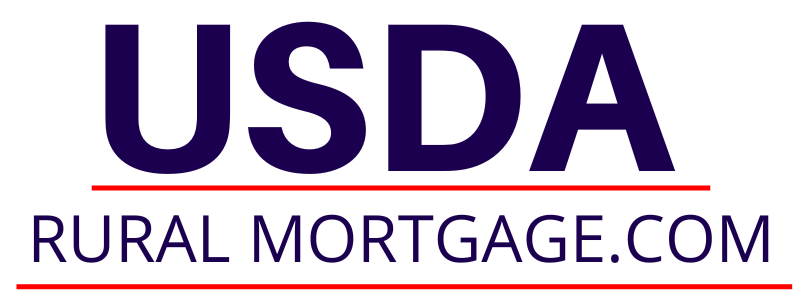Purchasing a home can be a daunting task for anyone, but self-employed individuals often face unique challenges, especially when it comes to securing a mortgage. USDA loans, backed by the U.S. Department of Agriculture, offer a viable solution for self-employed borrowers looking to buy a home in rural or suburban areas. This guide explores how self-employed individuals can qualify for and benefit from USDA loans.
Call today to get pre-approved 888-767-0554.
Understanding USDA Loans
USDA loans are designed to help low-to-moderate-income families purchase homes in eligible rural areas. These loans come with several advantages, including no down payment, competitive interest rates, and flexible credit requirements. There are two main types of USDA loans:
- USDA Guaranteed Loan: Issued by private lenders and guaranteed by the USDA.
- USDA Direct Loan: Issued directly by the USDA to eligible low-income borrowers.
Eligibility Criteria for USDA Loans
Before delving into specifics for self-employed borrowers, let’s review the general eligibility criteria for USDA loans:
- Location: The property must be located in an eligible rural or suburban area. You can check eligibility on the USDA’s property eligibility map.
- Income Limits: Your household income must be within the limits set by the USDA for your area. These limits vary based on the number of people in your household.
- Credit Requirements: While there is no minimum credit score requirement, a score of 640 or higher is typically preferred for streamlined processing.
Challenges for Self-Employed Borrowers
Self-employed individuals often encounter obstacles when applying for mortgages due to the variability of their income and the complexity of proving their financial stability. Unlike traditional employees, who provide pay stubs and W-2 forms, self-employed borrowers need to supply additional documentation to verify their income.
Qualifying for a USDA Loan as a Self-Employed Borrower
1. Documenting Your Income
To qualify for a USDA loan, self-employed borrowers must provide comprehensive documentation of their income. Here’s what you’ll need:
- Tax Returns: Provide at least two years of personal and business tax returns, including all schedules. This documentation helps lenders assess the consistency and reliability of your income.
- Profit and Loss Statements: Submit year-to-date profit and loss statements for your business. These statements give lenders a snapshot of your current financial health.
- Balance Sheets: Provide recent balance sheets to show your assets, liabilities, and equity.
- Bank Statements: Submit recent bank statements for your business accounts to demonstrate cash flow and financial stability.
- Client Contracts or Invoices: If applicable, provide contracts or invoices to support your reported income.

2. Calculating Your Income
Lenders calculate self-employed income by averaging your net income over the past two years, as reported on your tax returns. They may also consider any adjustments, such as depreciation and one-time expenses, to get a more accurate picture of your earning capacity.
3. Managing Deductions
Self-employed borrowers often deduct business expenses to reduce taxable income, but excessive deductions can lower your qualifying income for a loan. Be mindful of how deductions impact your reported income and, consequently, your loan eligibility.
4. Verifying Business Stability
Lenders want to ensure that your business is stable and likely to generate consistent income. They may:
- Review Business Licenses: Provide copies of your business licenses or permits.
- Check Business History: Show that your business has been operating successfully for at least two years.
- Confirm Business Address: If applicable, provide proof of your business location.
5. Improving Your Credit Profile
Although USDA loans have flexible credit requirements, a higher credit score can improve your chances of approval and may lead to better loan terms. Here are tips to enhance your credit profile:
- Pay Bills on Time: Ensure timely payments on all debts to maintain a positive payment history.
- Reduce Debt: Lower your debt-to-income ratio by paying down outstanding debts.
- Monitor Credit Reports: Regularly check your credit reports for errors and dispute any inaccuracies.
Benefits of USDA Loans for Self-Employed Borrowers
USDA loans offer several advantages for self-employed borrowers:
- No Down Payment: USDA loans require no down payment, making homeownership more accessible.
- Competitive Interest Rates: USDA loans often have lower interest rates compared to conventional loans.
- Flexible Credit Requirements: USDA loans can accommodate borrowers with less-than-perfect credit, provided they demonstrate financial stability.
- No Private Mortgage Insurance (PMI): USDA loans do not require PMI, reducing monthly payments.
Steps to Apply for a USDA Loan
- Check Eligibility: Verify property and income eligibility using the USDA’s online tools.
- Choose a Lender: Select an approved USDA lender familiar with working with self-employed borrowers.
- Prepare Documentation: Gather and organize your tax returns, financial statements, and other required documents.
- Submit Application: Complete the loan application and submit your documentation to the lender.
- Undergo Loan Processing: The lender will review your application, verify your information, and assess your eligibility.
- Close the Loan: Once approved, complete the closing process and secure your USDA loan.

Conclusion
USDA loans provide a valuable opportunity for self-employed borrowers to achieve homeownership in eligible rural and suburban areas. By understanding the requirements and preparing thorough documentation, self-employed individuals can navigate the application process with confidence and take advantage of the benefits USDA loans offer.
If you’re self-employed and considering a USDA loan, start by consulting with a knowledgeable lender to explore your options and begin the journey toward owning your home.
FAQs
1. Can self-employed borrowers qualify for USDA loans? Yes, self-employed borrowers can qualify for USDA loans by providing comprehensive documentation of their income and business stability.
2. What documentation is needed for self-employed USDA loan applicants? Self-employed applicants need to provide tax returns, profit and loss statements, balance sheets, bank statements, and possibly client contracts or invoices.
3. How does the USDA loan income calculation differ for self-employed borrowers? Lenders typically average the net income from the past two years of tax returns and consider any necessary adjustments for self-employed borrowers.
4. Are there special requirements for self-employed borrowers applying for USDA loans? While the basic requirements are similar to other applicants, self-employed borrowers must provide additional documentation to verify income and business stability.
5. What are the benefits of USDA loans for self-employed borrowers? USDA loans offer no down payment, competitive interest rates, flexible credit requirements, and no private mortgage insurance.
Further Reading
Contact Us
For more information on USDA loans and assistance tailored to self-employed borrowers, contact our experienced lending team today. We’re here to help you navigate the loan process and achieve your homeownership goals.



No Comments
Be the first to start a conversation